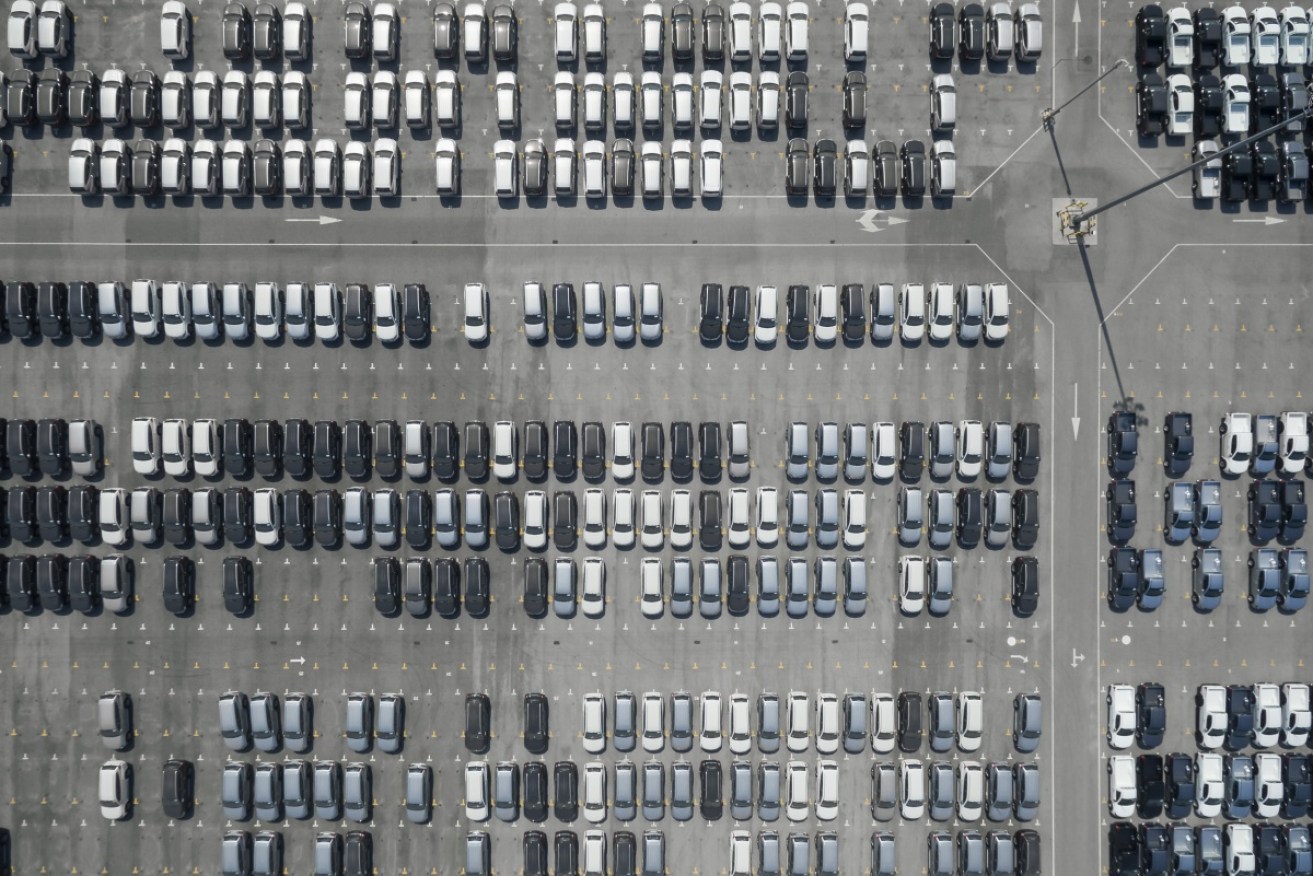Trouble in the car yards as vehicle sales plummet


Vehicle sales fell by 5.5 per cent in the three months to September. Photo: Getty
There’s something for everyone in the August retail sales figures, released on Friday, but if a 0.3 per cent rise in August after a flat July is a “rebound”, rebounds sure aren’t what they used to be.
There’s much less ambiguity in this week’s new vehicle sales. The Reserve Bank research previously reported here about the link between housing prices and car sales is holding true. Where housing prices soared highest, new vehicle sales are falling most as housing turns down.
Largely overlooked outside the motoring press is confirmation that the first quarter of this financial year is far from happy in the new car yards, especially in New South Wales.
According to the latest Federal Chamber of Automotive Industries figures, national new vehicle sales were down 5.5 per cent in September compared with the same month last year. That followed a decline of 1.5 per cent in August on the previous corresponding period and a sharp 7.8 per cent drop in July.
For NSW, the falls were 9.4, 4.1 and 9.6 per cent respectively. That hurts.
Admittedly last year was a record for sales, but we also have had population growth of 1.6 per cent and strong GDP growth, especially in NSW – a combination that would suggest sales would at least hold their ground, all other things being equal. Ipso facto, all other things aren’t equal with the housing market the most obvious suspect.
What’s more, it’s sales to private buyers nationally that have fallen most. Again compared with the corresponding 2017 month, private sales fell 9 per cent in July, 6.8 per cent in August and a very sharp 15.8 per cent last month.
Faced with constant clickbait headlines about a possible housing crash, it looks like individuals are continuing to buy food and clothing, but a new set of wheels is being put on hold.
That impact on the economy is an example of why the RBA and government would work to ensure the current housing correction doesn’t turn into anything worse.
On retail sales, annualising the seasonally-adjusted figure for the latest three months gives growth of 2.8 per cent – hardly robust given population growth and a little inflation.
Those looking for a glass half-full might like to point to a big 3.8 per cent rise year-on-year for August – but that would be misleading as August last year was a particularly bad month when sales shrank. The annualised 2.8 per cent seems more realistic.
But maybe it’s not so much a matter of whether the retail glass is half full or half empty – maybe the Australian Bureau of Statistics’ retail glass is simply smaller than it used to be and tells us less about the economy. We steadily increase our spending on services and things not counted as “retail sales” and we’re evolving on how we spend within retail.
For example, our beleaguered department stores appeared to have better August with sales up 0.9 per cent seasonally adjusted – albeit after diving 1.9 per cent in July. That’s two steps backwards, one step forwards.
In the bigger picture, department stores continue to go steadily out of style. A dive into the ABS details by IFM Investors shows that since 1990, department stores’ share of total retail sales averaged 8.1 per cent. Averaging over such a long period is kind to department stores, as they only accounted for 5.8 per cent of retail in the latest numbers.
(It could be worse – the poor old “newspaper and book” share of retail sales has more than halved on the same basis from 1.9 per cent to 0.9 per cent.)
What should particularly concern the government and RBA is that fewer consumers willing to buy a big-ticket item like a new vehicle could indicate that we don’t want to run down our savings ratio much more. It’s our shrinking savings ratio that’s been allowing us to maintain consumption spending at a higher level than household income growth that’s held back by low wages growth.
The new vehicle sales figures are published a month before the relevant month’s retail sales figures. The government and RBA might have noticed poor vehicle sales for July were followed by week retail sales for that month. OK vehicle sales for August were followed today by OK retail sales. September’s vehicle sales were not good.








